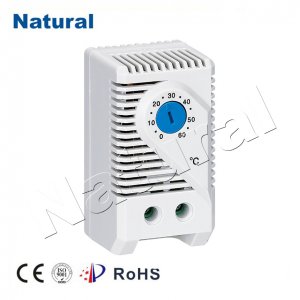Cabinet thermostats, often overlooked in the realm of home and industrial appliances, play a crucial role in maintaining optimal temperatures within cabinets and enclosures. These unassuming devices are the unsung heroes behind the scenes, ensuring that sensitive electronic components, perishable goods, and even pharmaceuticals remain at their desired temperature ranges. In this article, we will delve into the world of cabinet thermostats, examining their functions, applications, and the key factors to consider when selecting one.

Understanding the Basics At its core, a cabinet thermostat is a temperature control device designed to regulate the internal temperature of cabinets and enclosures. These compact units are equipped with temperature sensors and relay switches, which work in tandem to maintain a set temperature range. When the temperature inside the cabinet exceeds or falls below the preset limits, the thermostat activates a heating or cooling element, such as a fan or a heater, to restore the desired temperature. Applications of Cabinet Thermostats Cabinet thermostats find applications in various industries and settings: Electronics: In electronic cabinets, sensitive components can malfunction or degrade if exposed to extreme temperatures. Cabinet thermostats ensure that the internal temperature remains within the safe operating range, enhancing the reliability and lifespan of electronic equipment. Food Industry: In commercial refrigerators and freezers, cabinet thermostats regulate the temperature to keep food products fresh and safe for consumption. They also prevent frost buildup and energy wastage. Pharmaceuticals: Pharmaceuticals often require strict temperature control to maintain their efficacy. Cabinet thermostats are used in drug storage cabinets and refrigerators to ensure compliance with temperature-sensitive medication storage requirements. Industrial Applications: In industrial settings, cabinet thermostats help control temperature in equipment cabinets, preventing overheating and prolonging the life of machinery. Greenhouses: Cabinet thermostats can be employed in greenhouses to control the temperature and create an optimal environment for plant growth. Selecting the Right Cabinet Thermostat Choosing the appropriate cabinet thermostat is essential to ensure efficient operation and protection of sensitive contents. Here are some factors to consider: Temperature Range: Determine the required temperature range for your specific application. Some thermostats are designed for high-temperature environments, while others excel at low-temperature control. Accuracy: Consider the thermostat’s accuracy and tolerance level to ensure it can maintain the desired temperature with precision. Reliability: Look for thermostats from reputable manufacturers known for producing durable and reliable products. Mounting Type: Choose between various mounting options, such as DIN rail, panel mount, or surface mount, depending on your cabinet’s design and requirements. Additional Features: Some cabinet thermostats offer advanced features like digital displays, alarms, and remote monitoring capabilities. Evaluate if these features are necessary for your application. Environmental Conditions: Ensure the selected thermostat can operate effectively in the environmental conditions of your cabinet, such as humidity and dust levels. Power Supply: Check the power supply requirements of the thermostat and ensure compatibility with your cabinet’s power source. Conclusion Cabinet thermostats may go unnoticed in our daily lives, but they play a crucial role in maintaining the integrity of various systems and products. Whether it’s protecting sensitive electronics or ensuring the freshness of food and medicines, these unassuming devices are indispensable. When selecting a cabinet thermostat, careful consideration of factors such as temperature range, accuracy, and additional features is essential to ensure the desired level of temperature control and reliability. So, the next time you open your refrigerator or power up your computer, remember that there’s a cabinet thermostat silently working to keep everything just right.